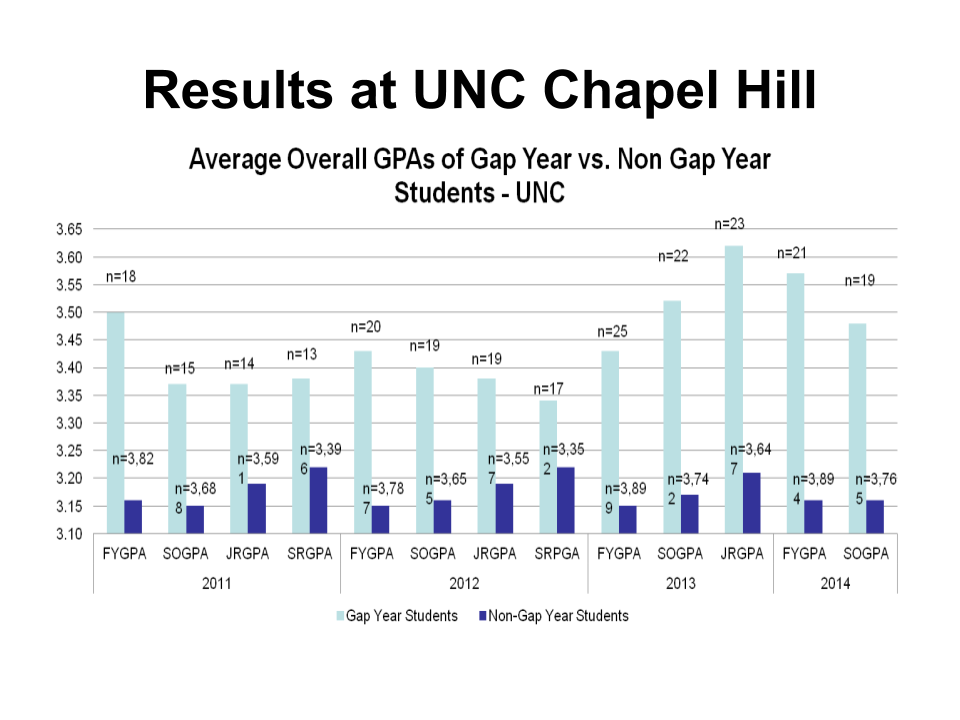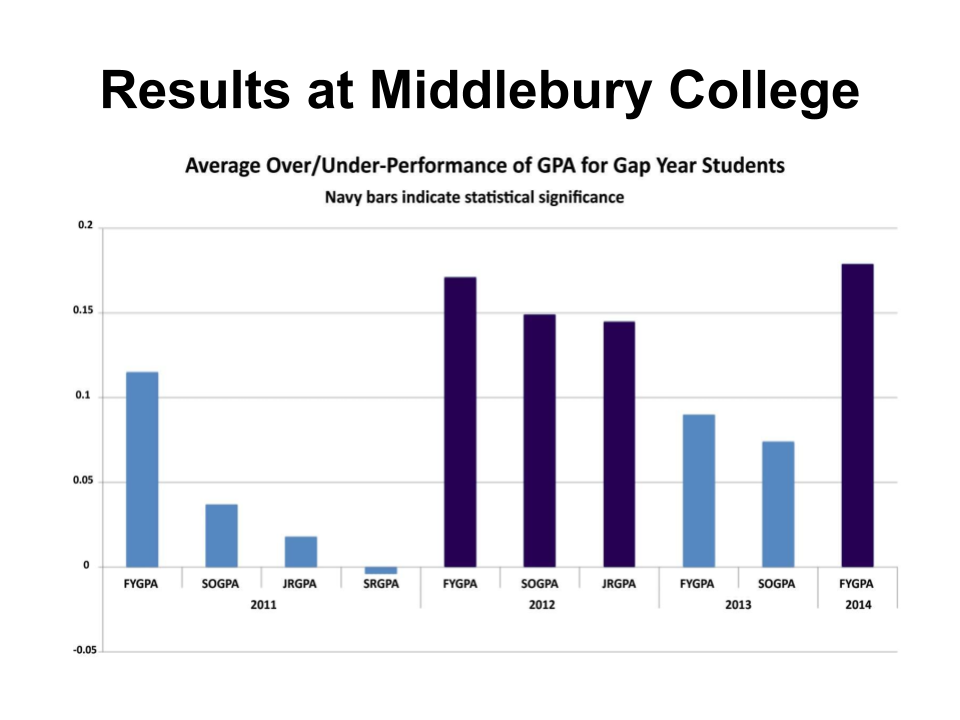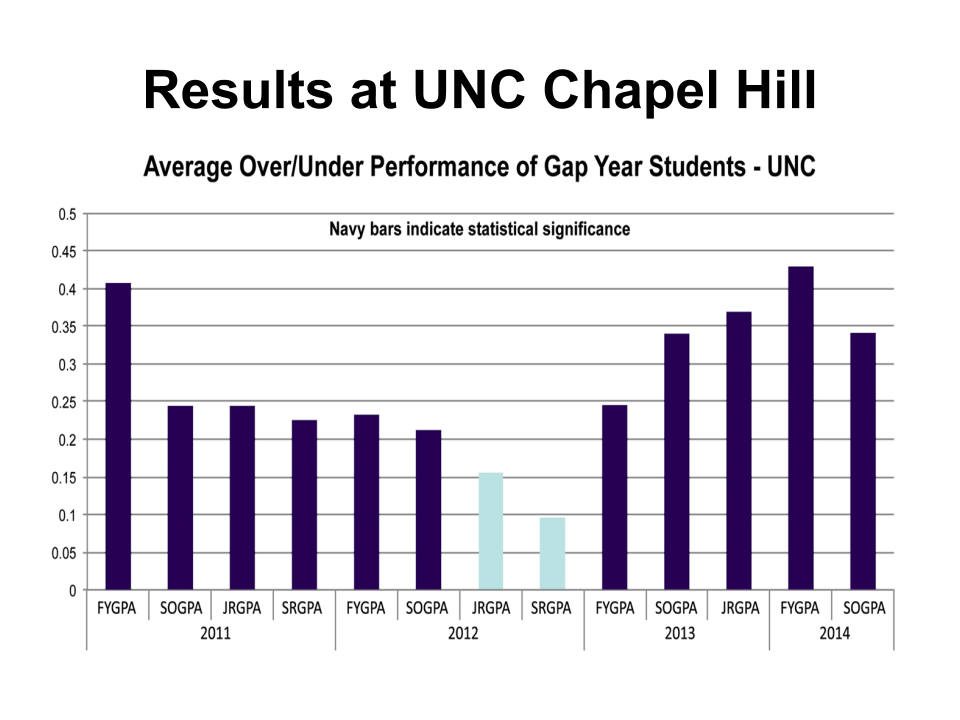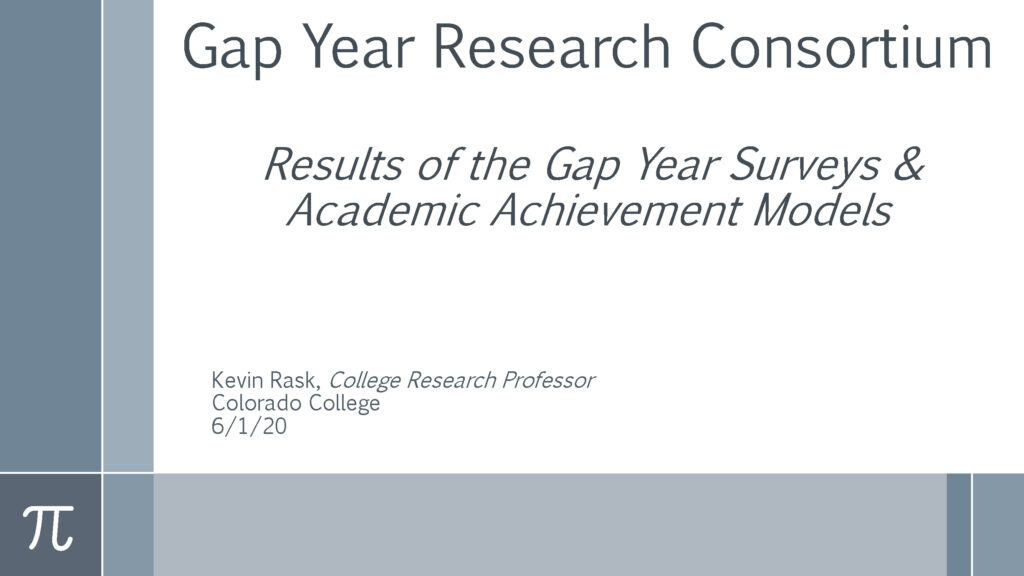Middlebury and UNC-Chapel Hill Over/Under-Performance Study
In 2012, Middlebury College created a methodology that looked at the academic performance of students who had taken a gap year, compared to those who did not take a gap year. This methodology was later replicated at the University of North Carolina at Chapel Hill. These two charts show average GPAs for groups of students at both institutions, with four years of data for the Class of 2011, three years for the Class of 2012 (four years for that class at UNC-CH), two years for the Class of 2013 (three years for UNC-CH), etc. The numbers at the top of each column show the number of students in each group. These bar charts show that, in almost all cases, students who had taken a gap year have, on average, higher GPAs than those who did not take a gap year.
However, it is important to note that historically, students who have taken a gap year have come from more affluent families and may have attended high schools that may have been more academically challenging, so these raw GPA averages are not particularly surprising. We then statistically controlled for the numerical academic rating that these students had received in the admissions process (typically a rating that provides a measure of potential for academic success at that institution, based on all academic information contained in the application; at most institutions these numerical ratings provide by far the best predictor for academic performance). With that information, we then compared how gap year students actually performed compared to what would have been predicted, based on their academic rating. The bar graphs show the amount by which the gap year students’ actual academic performance exceeded, on average, that which would have been predicted by the academic rating given in the admissions process. These final two charts show that, on average, most students who had taken a gap year ended up over-performing academically, and that this positive effect remained true for all four years for most students.





